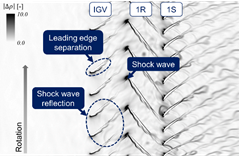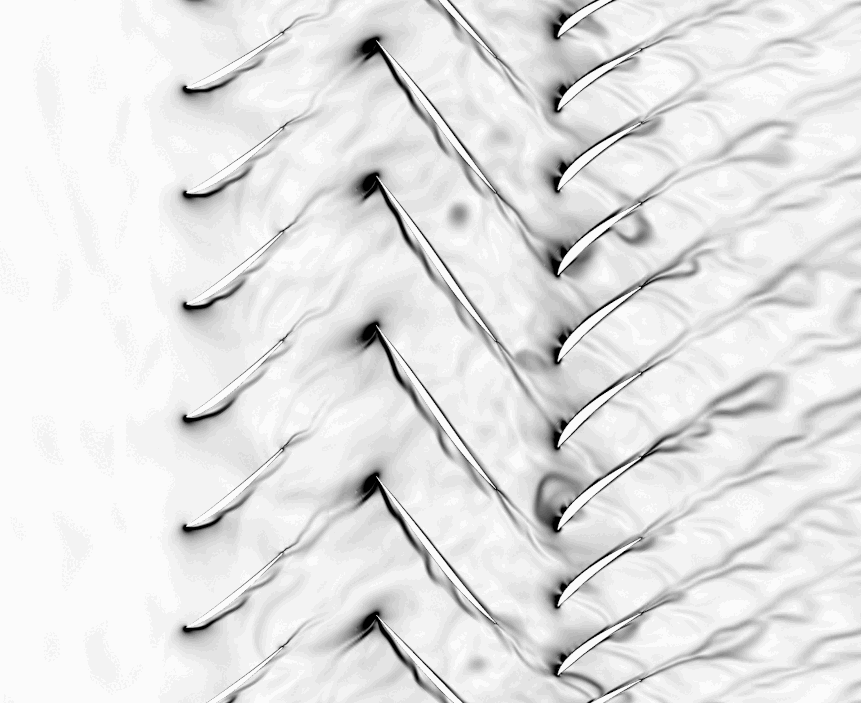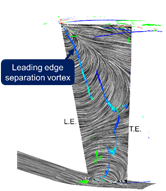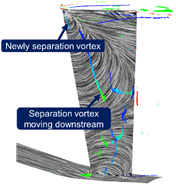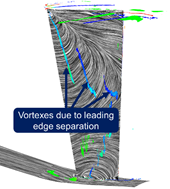Newsletter 2023.2 Index
Theme : "The Conference of Fluid Engineering Division (February issue)”
|
Large-Scale DES Analysis of Rotor-Stator Interaction Field in a Transonic Axial Compressor
|
Abstract
In this paper, turbulent flow fields in a multi-stage transonic axial compressor used in industrial gas turbines have been investigated using large-scale detached eddy simulation (DES) analysis. The analysis was performed in a manner that reproduced the flow field at the compressor resonance point, and the number of computational cells was approximately 450 million for all stages and all circumferences.
The flow field was analyzed by data mining techniques including vortex identification based on the critical point theory and topological data analysis of the limiting streamline pattern visualized by the line integral convolution (LIC) method.
First, Visualization of the instantaneous flow field showed that wake interference occurred, affecting the flow field between the blades. In addition, shock waves and expansion waves generated by the first-stage rotor blades propagated upstream to the inlet guide vane (IGV) and were reflected by the blade surfaces. Large-scale leading edge separation occurred on the negative pressure surface of the IGV and varies widely in time.
Next, ensemble averaging was performed on the obtained numerical results using the phase-locked averaging method to quantitatively investigate the unsteady state of the interaction between the IGV and the first-stage rotor blade. As a result, the leading edge separation occurring in the IGV exhibited a periodic behavior of splitting and advection as the phase of the first-stage rotor blade changed. Such periodic fluctuations occurred with the same period as the blade passing of the first-stage rotor, indicating that the flow field fluctuates due to the potential interference with the first-stage rotor blade.
Key words
Gas turbine, Axial Compressor, DES, Phase locked averaging method
Figures
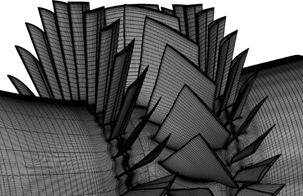
Fig.1 Computational grid (every three line)
|
|
Fig. 2 Density gradient contours at 80% span (left : snapshot, right : animation) |
|
|
|
|
|
|
(a) |
(b) |
(c) |
(d) animation |
|
Fig.3 Flow fields at each clocking angle |
||||



